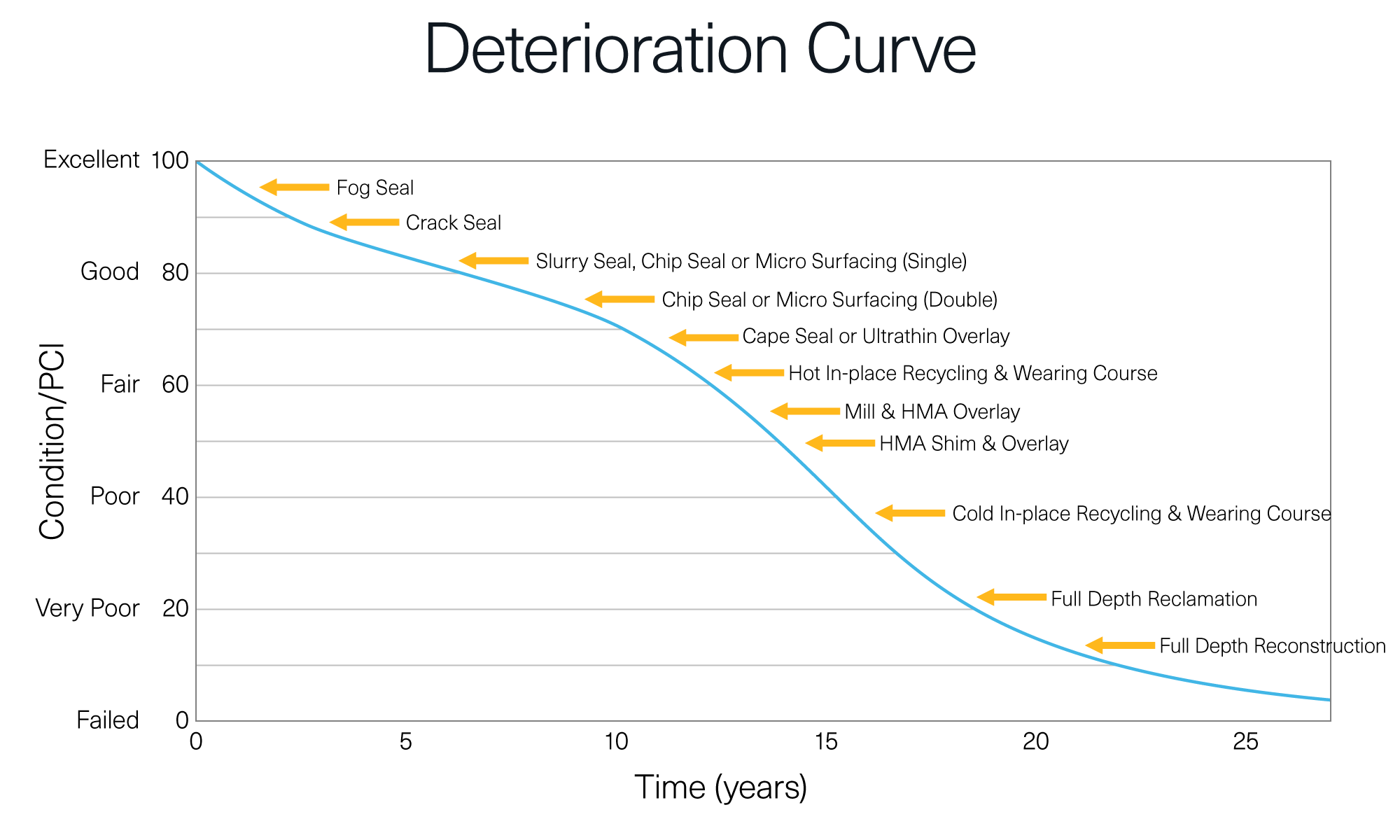Why Pavement Preservation Is Effective.
We like to think of pavement preservation like diet and exercise: the best way for your body to stay healthy is to actively participate in both. The same is true for roads – the more you take care of them along the way, the better shape they’ll stay in over the long-term.
If we wait to eat better and exercise more until the later stages of our lives, many of us will need major health overhauls as we approach our “golden years.” And if we wait to take care of our roads until the later stages of their lives, they will also need very costly and disruptive overhauls.
Some people say the only things certain in life are death and taxes, but we would add asphalt deterioration to that list. No matter how well we build or rebuild our roads, the pavement starts decaying the very next day. We all understand how heavy traffic, especially trucks, wear out our roads. But the environmental effects of UV rays and oxidation also take a devastating toll, even on lesser traveled roads.

This inevitable pattern of pavement decline illustrates multiple opportunities to intervene before a full depth overhaul is required. Treating earlier and more often higher up the curve always saves communities money.
Unfortunately, many agency road programs are created with a “worst-first” mentality – spending all or most of the budget to address the worst roads while leaving the others alone. While this might seem to make sense in the short-term and eliminate a few complaints, it ends up costing considerably more over the long run.
“The Town of Lexington has now been working with indus for almost a decade with pavement preservation technologies being the backbone to extending the life of our pavement network. Through our proactive preservation program and expanded toolbox our roadway network that began its journey at a 68 is now decimal places from breaking 90 and is very noticeable to our network users.”
— John Livsey, PE, Town Engineer, Lexington, MA
To learn more, read about Pavement Preservation In Action or see The True Life Cycle Cost.
